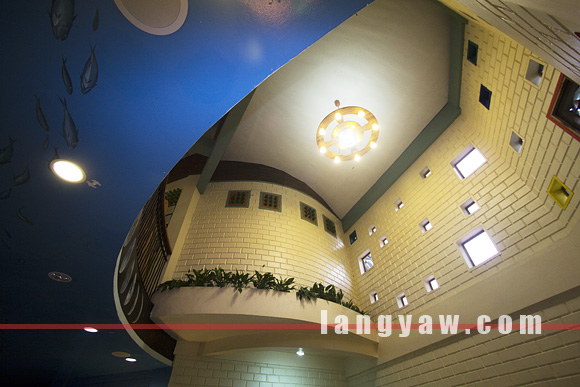
Nothing is thrown away. From discarded materials, laundry water to even organic and bodily wastes. In fact, this man even greedily brings in a ton of rotting vegetables and fruits from the market daily, hoarding it via a personally owned truck and dump these in his sprawling lot. And he is all smiles.
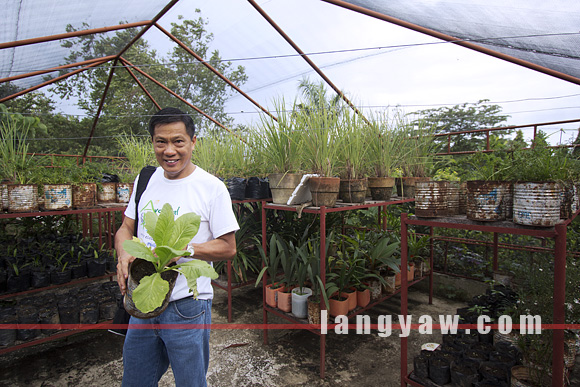
Nestor Archival, an electrical engineer by profession was a Cebu City councilor in 2001 and he was in a bind. The million residents of the premier city in the Visayas was generating 500,000 tons of garbage daily and it will only take time before the landfill is rendered full. Tasked with finding a solution, an idea sparked.

From that time until after serving three full terms ending in 2009, and to this day, his 7,000 square meter estate, with his residence called The Archival Eco House in Talamban has been a hotbed of ideas and experimentation. It showcases sustainable living that has been wowing the 700 students and visitors, both local and international, who come to this place weekly.
“We are living in this earth and we’re all connected with each other. Not physically but through the ‘ether.’†Nestor avers. “What happens to the environment will surely affect you and me.â€
A walk around the compound grounds is a lesson in ecology and the environment amidst flowering plants, gardens and trees but without the hard selling and rhetoric. Instead, the visitor comes to realize the importance of living sustainably through observations of actual processes.
A case in point, which is an experiment, laundry and bath water is transported to an open tank, part of a five tank layout, that undergoes natural processes through plant filtration until it reaches the last tank wherein ducks and other animals already drink and use the water.
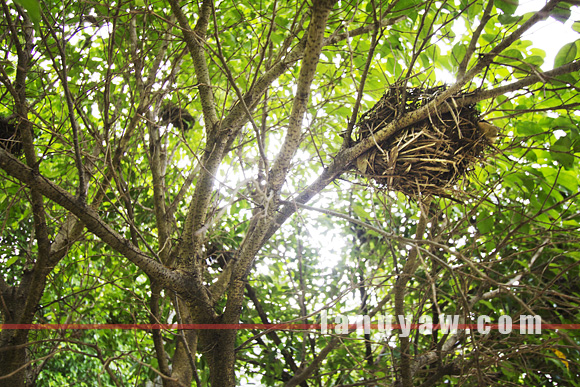
Remember the organic trash from the market? These are utilized two ways. First, as animal feed wherein their digested waste undergo biomass process through his bio digester that eventually provides bio fuel. Second, as compost that earthworms in several plots digest and eventually, after a 50 day cycle, produce vermicast, waste that is nutrient rich and is an eco friendly soil conditioner that can be sold from 5-15 pesos per kilo. Now, one plot at the compound can generate 100 kilos of these.
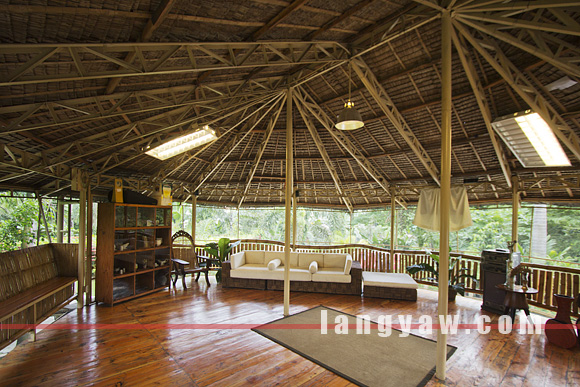
There are still other processes that make good use of waste. For non biodegradable materials like glass, plastic, wires and Styrofoam, these are mixed with cement to form bricks, building blocks that are used in construction.
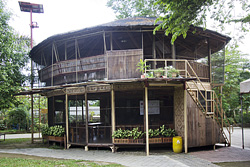
Huge wooden wire spools, Nestor is primarily into the electrical business, become children’s stools and tables, and because of the great number, has created a two storey wooden circular structure.
Nutree Cafe, serving purely vegetarian food at the first level with all the ingredients grown in the garden, and a multi-purpose space at the second level that is utilized for yoga sessions to children’s classes.
There is also a wide pool between the cafe and the eco house thriving with tilapia fish and it is aerated thru motors powered by solar energy. Around the pool, are several young trees teeming with bird nests.
The primary showcase of sustainable living is definitely the two storey eco house that Nestor calls House of Nature, located at the far end of the compound. Its form is unusual but interesting. Once you get inside though, be prepared to be surprised!
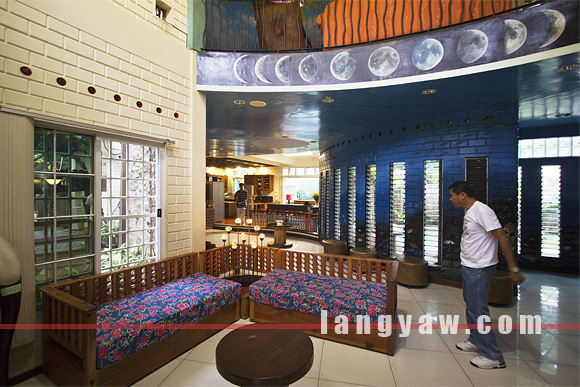
It is a modern structure wherein natural ventilation and illumination is properly thought out. Hot air rises and escapes through vents in walls and openings at the upper levels while cool air enters, thus minimizing on airconditioning and electric fans.

Large windows at the upper levels including a sun dome (with a mirror directly at the bottom  thus scattering light in the living room) and a sun roof at the kitchen as well as jalousied windows along the walls let in natural light, thus limiting the use of electrical lighting systems.
The structure itself was built using the bricks with the non biodegradable waste incorporated. Used bottles provide sealed but transparent openings in sections of walls.
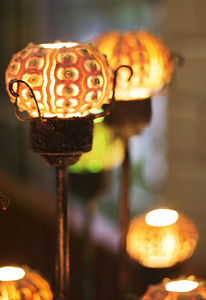
While pragmatic design approaches are well implemented, it is never boring. Infact, the interior is playful with its decor and whimsical with its accents. Fastfood plastic caps make for plant pots or decorative items in one small table.
Sea urchin shells enclose a corner lamp’s many bulbs, casting a soft, and unique glow when lighted. A strip of mosaic at the kitchen floor consists of broken colored glass as well as spent bullet casings. Balustrades sport aluminium softdrink and beer cans while cut PVC pipes become sofa backs. And there are so many things to be discovered that brings a smile to one’s faces.
Clever usage of found things and discarded materials is an understatement. Add to these, one entire wall at the living room that divides the interior with the exterior where the pool is located is a beautiful undersea mural with schools of fish running through the whole width and down to the rooms. Upstairs, sections of walls are painted with trees and flowers while the ceiling with clouds and the blue sky.
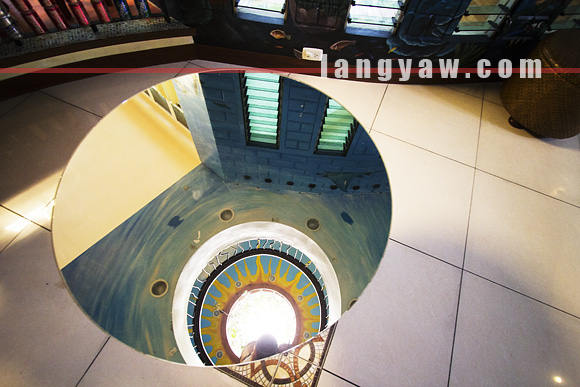
The experience is nothing short of overwhelming and spending time inside the house is just so cool both figuratively and practically because of the natural ventilation. Whereas the thrust is to be as eco friendly and as sustainable as possible, the current house setup still uses commercially generated electricity mainly for the modern electrical appliances. “Monthly, the electric bill is P4,000 but my main goal, of which we’re working on, is to be fully solar and wind power dependent,†Nestor vows.


Experimentation and finding ways to eco living is always happening inside the compound. One of Nestor’s current projects is designing and building a cheap eco home that small families can very much afford.
The prototype currently produced utilizes the same compound bricks and natural ventilation and lighting ideas found in the main eco house but on a smaller scale.
Nestor and his Archival Eco Home has shown us the way to sustainable and environmentally friendly living, healthy living as well as he is also a vegetarian. It is definitely attainable. It might take some getting used to but in the coming years, might be the only option left.
Archival Eco-House
www.houseclosetonature.com
Ilaya, Talamban
Cebu City
Article originally published in Space Magazine August-October 2011 issue.



i had a chance of working with this guy on our roadrev project and other environmental projects as well. wa pa jud ko ka anha sa ilang balay da…
is this place open to the public?
yes, they have visitors all week
bai, okay kaayo iya balay. you should visit